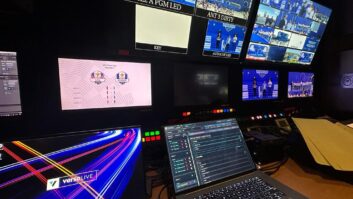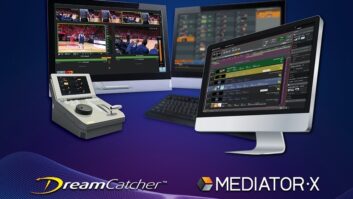Over the last few years, there has been a sharp acceleration in live sports events offered via streaming services as content providers look to connect with global audiences, generate additional revenues, and maximise advertising profits.
Live sports events are one of the most profitable types of video content, with the power to attract millions of simultaneous viewers. According to Parks Associates, annual sports OTT subscription revenue in the United States was $13.1 billion in 2022 and will almost double to approximately $22.6 billion in 2027, a 73 per cent increase. Similar to the US, the European video market is seeing a rise in sports OTT subscription revenues.
Key challenges with live event streaming
Monetisation is a major focus for content providers delivering live streaming events. Today’s viewers crave a personalised streaming experience, and by offering targeted advertising, content providers can satisfy the demand for personalisation while tapping into new revenue streams. However, delivering targeted ads at scale during live events is challenging. The majority of streaming platforms are not designed to deliver targeted ads for millions of concurrent viewers without introducing latency.
Scaling, in general, is also an issue. Content providers must be able to scale their streaming service for high volumes of consumers. This requires a streaming platform that is built to scale on the fly to meet the demand.
Latency is another significant issue for live event streaming. When there is a noticeable delay between what’s happening in real-time and what’s being shown on the subscriber’s screen, it reduces the quality of experience (QoE) and creates viewer dissatisfaction with the streaming service.
Furthermore, the operations and workflow management side of live streaming is always a challenge for content providers. Streaming a live sports event is complex, requiring dozens of cameras and manpower onsite. Content providers need state-of the-art solutions to reduce the number of personnel required and maximize the efficiency of live event streaming.
Why cloud, SaaS, and SSAI are essential for live event streaming
Several technology innovations, including the cloud, SaaS, and server-side ad insertion (SSAI), are driving the movement toward better live-streaming services.
Content providers are relying on cloud-based video streaming platforms for live events because it’s proven to be reliable, enabling real-time scaling, low-latency streaming, and targeted ad delivery, even during periods of peak demand. The elasticity of the cloud enables content providers to quickly scale up and down for a live event. Based on a pay-as-you-grow business model, the cloud ensures that content providers only pay for what they need compared with on-premises infrastructure that is expensive and can take months to deploy.
With live event streaming, reliability is critical. Part of what makes the cloud so robust are the options for geo-redundancy, multi-cloud, and multi-CDN. With a geo-redundant cloud platform, content providers can utilise data centres across multiple geographic locations to ensure higher availability and uninterrupted live streaming experiences. Leveraging multiple clouds decreases the risk of outages. If one cloud goes down, the streaming service is automatically backed up by another cloud provider, ensuring that sports fans never miss a moment of a premium event. Tapping into multiple CDNs allows content providers to pick the best delivery path for viewers, optimizing QoE and costs.
Streaming live events can be complex, and a SaaS model frees content providers from infrastructure oversight, enabling them to gain increased agility and operational efficiencies. By using a SaaS solution that supports innovative technologies like cloud, content-aware encoding, and the CMAF standard, content providers can deliver live events with latency as low as five to six seconds (i.e., about the same end-to-end latency as a live broadcast).
Additionally, innovations in SSAI are helping content providers unlock new monetization opportunities for live streaming. By adopting the SSAI solutions, content providers can personalize advertisements down to the user level, based on available data, increasing viewer engagement and improving CPMs.
Conclusion
The live sports streaming market is booming. To provide a premium experience, content providers must deliver outstanding video quality, low latency, and personalised ads. Harmonic is leading the charge for innovation in live event streaming with its VOS360 Media SaaS and VOS360 Ad solutions, which enable high-quality, reliable video streaming at scale, with targeted advertising for millions of concurrent viewers.







